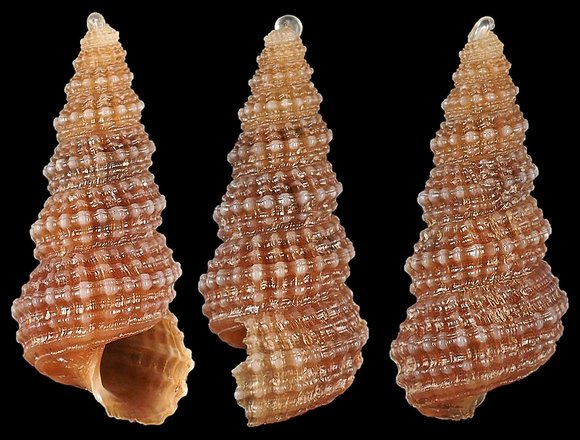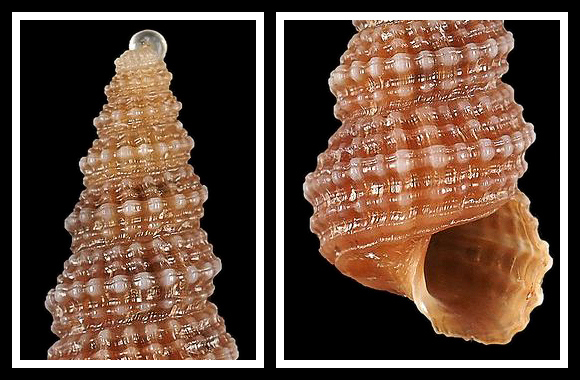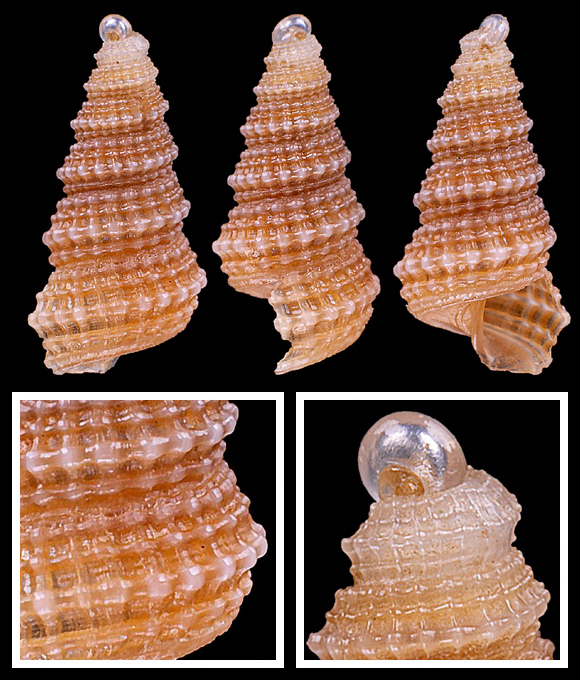
The species is found in the circalittoral down to the continental slope (60-600m), in red or white coral communities.
Morphologically, letei is characterized by its 4 primary spiral rows of buttons, which are slightly paler than the rest of the shell; the two adapical spirals (1-2) are the weakest, the two abapical (3-4) are the strongest, especially the spiral 3, which runs at the periphery of the whorl; this row is the most prominent, with oversized buttons and often a noticeably paler colour. The species is named after the archaeologist Neven Lete, who also collect seashells from his area, and is one of the photographers who contribute to the enrichment of this website. – Above and below: 80m deep, on red coral bottom, Lastovo island, Dubrovnik-Neretva Comitat, S. Croatia. 8mm. Original pictures provided by R. Stanić (HR).
– (CC BY-NC-SA) –
– (CC BY-NC-SA) –

The study of the spiral rows gives useful tools for the species delineation in Mediterranean: in bieleri the spirals are more spaced apart, and their buttons are much smaller; in cochlaeformis, the spirals bear much more buttons, which are less well differentiated; in coronata, there are only three spirals, and the strongest is the suprasutural one, giving the shell this crowned appearance that is the origin of the name; in gemmulata the strength of the spirals is similar to that in letei but the spiral 2 is markedly weak, and the shell is much more slender, subcylindrical; in quadricarinata the four spirals are not really granulose, and look more like keels; in retusa the spirals are only 3 in number, with big buttons.

Original pictures provided by A. Nappo (IT).
– (CC BY-NC-SA) –